01 March 2024: Human Study
Levels of Depression, Anxiety, and Stress Among Saudi Arabia’s Medical and Dental Practitioners: A Cross-Sectional Study Following the COVID-19 Pandemic
Ahmad H. Jabali1ABDEF, Hemant Ramesh ChourasiaDOI: 10.12659/MSMBR.942676
Med Sci Monit Basic Res 2024; 30:e942676
Abstract
BACKGROUND: Healthcare providers, particularly in dentistry and medicine, experience high stress levels, exacerbated by factors like patient anxiety, clinical work, and continuous training. The COVID-19 pandemic has further increased these risks. This study aimed to assess depression, anxiety, and stress (DAS) among dental and medical practitioners in Saudi Arabia, investigating influential factors on their psychological behavior.
MATERIAL AND METHODS: In this cross-sectional study conducted in July and August 2021, the depression, anxiety, and stress scale (DASS-21) was administered through a Google questionnaire. Data analysis involved stepwise mode modeling and bivariate analysis, with a significant P value <0.05, using the Statistical Package for the Social Sciences.
RESULTS: The study included 376 dentists and 201 medical practitioners. Most worked more than four days a week, slept under six hours nightly, and were non-smokers. DAS scores indicated depression (51.7-57.4%), anxiety (50.7-58.2%), and stress (54.2-60.1%). Significant differences (P<0.05) were observed among younger, single, female, and lower-income participants. Higher DAS scores correlated with less sleep, extensive social media use, and smoking history. Socio-demographic factors were mostly non-significant for medical practitioners, except social media use. Sleep duration significantly impacted stress levels, while specialty, income, and marital status influenced depression
CONCLUSIONS: DAS levels were notably higher in dentists compared to medical practitioners, particularly regarding anxiety. The impact of socioeconomic factors varied, being more statistically significant for dentists.
Keywords: Anxiety, Depression, Practice Management, Dental, Practice Management, Medical, Socioeconomic Factors, Stress, Psychological
Background
Healthcare providers are quite well-off, with significant wealth, financial security, and a positive reputation in society [1]. Healthcare providers face greater levels of professional stress than members of other professions [2]. When people are repeatedly exposed to stressors with little time to recuperate between them, it develops into chronic stress, which can have serious consequences for the body [3]. The link between physical health and psychological well-being has been extensively demonstrated [4,5]. Stress reactions can sometimes be emotional, behavioral, or physical [6]. The World Health Organization has labeled occupational stress to be the twentieth century’s global health epidemic [6].
Every profession may be at risk for the onset of certain diseases, although some vocations, such as dentistry and medicine, are regarded to be more stressful [7]. There are numerous factors that lead to stress, anxiety, and depression. Some of these factors are: clinical work, working with nervous and anxious patients, work that frequently causes pain in the patient, time management, and the requirement to constantly work on extra training for job success. Aside from this, healthcare practitioners encounter a variety of other occupational dangers. Infection, chemical dangers, and radiation are all examples [7].
Furthermore, the COVID-19 pandemic has a high impact on healthcare providers. Physicians and dentists work in close proximity to patients. Biosafety precautions may be less successful in limiting the spread of COVID-19 during dental procedures, which create a considerable volume of droplets and aerosols [8]. The Occupational Safety and Health Administration put dental practitioners in the very high-exposure risk category because of the potential for exposure to the SARS-CoV-2 virus as a result of aerosol-generating procedures [9]. Although health professionals throughout the world have received updated guidelines on biosafety standards, they are nonetheless under a lot of stress at work [10].
There is a need to conduct a thorough examination of the levels of stress, anxiety, and depression experienced by health professionals while in the workplace. This would lead to determining the efficacy of management approaches to enhance their overall health and enable them to perform their health profession more effectively while maintaining a better level of service quality [6]. As a result, the purpose of this study was to assess the level of depression, anxiety, and stress (DAS) among medical and dental practitioners in the Kingdom of Saudi Arabia in the era of the COVID-19 pandemic, as well as to investigate factors that may influence their psychological state and behavior.
Material and Methods
STUDY METHOD:
This is a cross-sectional study that was conducted to evaluate mental wellness among medical and dental practitioners in the Kingdom of Saudi Arabia during July and August of 2021 using the depression, anxiety, and stress scale (DASS-21). An online questionnaire was sent to the participants in English and Arabic in the same form. Since the Arabic language was the mother tongue of most of the participants, the Arabic language was added to the questionnaire to avoid any misunderstanding of any question. The Arabic version is validated and has been used before in other studies [11,12]. The identity of the participants was undisclosed, no personal information was collected, and their participation was voluntary, with the ability to withdraw from the study at any time. A Google questionnaire asking about the demographic characteristics of the participants along with the DASS-21 in 3 domains (Depression, Anxiety, and Stress) was disseminated nationally to the participants via email. The DASS-21 is a short form of a self-reporting scale that measures these 3 domains of the psychological health of an individual. Wide use of the DASS-21 with enough reliability and validity has been found [13,14]. The DASS-21 scale is divided into 3 domains and each domain contains 7 items. To assess the response of the medical and dental practitioners, a 4-point scale (Likert scale) from 0–3 was used as follows (0=Did not apply to me at all, 1=Applied to me to some degree or some of the time, 2=Applied to me to a considerable degree or a good part of the time, 3=Applied to me very much or most of the time).
SAMPLE SIZE CALCULATION:
The sample size was calculated based on the differences between DAS categories extracted from a previous study [15]. The most conservative mean difference (smallest) and the most conservative standard deviation (largest) were selected. The G*Power software program version 3.1.9.2 was used with the following inputs: 2-tailed significance level, Type I error (α-error) of 5%, and study power (β-error) of 95%. Thus, a total of 480 participants were needed for the study. This was increased by 10% for the possibility of dropout. Therefore, the final required sample size was 528 participants.
STATISTICAL ANALYSIS:
The questionnaire responses were exported to a Microsoft Excel 2016 master sheet, undergoing a meticulous process of cleaning, coding, and double-checking. The findings were generally presented for the entire sample and further stratified by the participant’s field of study (dental or medical). Participant distribution based on study variables and the severity of DAS scores was conveyed through frequencies and percentages. The initial examination of continuous variables included a normality test, revealing a non-normal distribution of the data. Consequently, non-parametric tests were utilized. Variations in DAS scores (mean and standard deviation) among different categories were evaluated using Mann-Whitney U and Kruskal-Wallis tests as appropriate. Subsequently, a multiple linear regression analysis was performed to identify significant determinants. Variables found significant in bivariate analyses were incorporated into the model, with a stepwise mode selected. The Statistical Package for the Social Sciences (SPSS, IBM Corp., Armonk, NY) version 26 was employed for data analysis, and a
Results
DIFFERENCES IN DAS SCORES:
Differences between DAS scores according to the different socio-demographic variables for the whole sample are presented in Table 3. There were significant differences (P<0.05) correlated with sex (higher in women), age (higher in the <30 years group), marital status (higher in singles), monthly income (negatively associated with income), and specialty (higher in general practitioners). Also, sleeping ≤6 hours/day, surfing social media for >4 hours/day, and being a previous or current smoker led to significantly higher DAS scores.
For dental professionals, there were significant differences (P<0.05) in the DAS domain scores about marital status (higher in singles), income (negatively associated with income), and specialty (higher in general practitioners). Similarly, significant differences (P<0.05) were found with regard to sleeping hours (higher in the ≤6 hours group), surfing social media (the higher the surfing time, the higher the DAS), smoking status (higher in current smokers), and daily physical exercise (lower in the yes-response group). More details are presented in Table 4.
In contrast with dental participants, differences among medical participants were not significant (P>0.05) with regard to most of the socio-demographic variables. Surfing social media was the only significant variable for all DAS domains. Sleeping hours were only significant for the stress domain (P=0.006). However, physical exercise time, specialty, income, and marital status were significantly correlated with the depression domain. Having children was only significant for the anxiety domain; the higher the number of children, the lower the score of the domain. Sex and age were significant for the stress and depression domains (higher score for age <30 years and female sex). More details are shown in Table 5.
DETERMINANTS OF DAS:
The stepwise regression analysis of the significant determinants of the DAS for the whole sample revealed a significant effect (P<0.05) of sleeping hours, surfing social media, and smoking status on all DAS domains. Whereas sex had a significant effect on the stress and anxiety domains, practice specialty had a significant effect on the anxiety and depression domains, and physical exercise only had a significant effect on the stress domain. For dental participants, sleeping hours had a significant effect on all DAS domains, surfing social media had a significant effect on the stress and anxiety domains, smoking status and exercise had a significant effect on stress and depression, and practice specialty only had a significant effect on the depression domain. For medical participants, sex and surfing social media only had a significant effect on the stress domain. Age and sleeping hours had significant effects on the stress and depression domains, and having children had a significant effect on the anxiety domain. More details are presented in Table 6.
Discussion
In the present study, 376 dentists and 201 medical practitioners participated. Most participants (62.2%) were male, worked more than 4 days a week, slept less than 6 hours per night, and were non-smokers. Depression (51.7–57.4%), anxiety (50.7–58.2%), and stress (54.2–60.1%) were measured in dentistry and medicine subjects by the DASS-21. Higher scores (
In the present study, dental practitioners had higher DAS levels than medical practitioners. Among these, the anxiety domain was the only one with a severe degree. Numerous socioeconomic variables were more statistically significant in dental practitioners compared with medical professionals. Regarding the dental field, our findings revealed that stress was prevalent among singles, general practitioners, and smokers. There was no difference between men and women, nor between young and senior dentists. Furthermore, dentists who did not get enough sleep, spent too much time on social media, and did not exercise were under a high level of stress.
Our findings were consistent with prior research that investigated the effects of age and sex on stress and found no difference [16,17]. Other research has revealed that women are more stressed than men [18–20]. However, evaluation of these studies revealed that they were conducted on students, which may reflect only that studying has a greater impact on women than men. In the medical profession, however, stress levels were also greater in women, as well as young physicians who did not get enough sleep and spent too much time on social media, according to the present data. Previous studies have found that female physicians had more stress than male physicians [21,22]. Female doctors have made more compromises between family and profession than male doctors. They are typically compelled to execute many roles (mother, spouse, doctor) at home and at work to the greatest standards [21,23].
In the present study, depression was higher in female dentists than in male dentists, but this difference was not statistically significant. Moreover, general practitioners were more depressed than specialists. Consistent with the current study, previous research found that women were much more depressed than men, particularly in pediatric and periodontics specialties [24]. In contrast, it has been shown in a different study that male dentists were more depressed than female dentists [25]. This might be due to a variation in cultural structure. Household responsibilities and family lifestyles may differ from one culture to the next. The current study indicates that single and young dentists experienced higher depression than older married dentists, which is consistent with previous research [26]. Married and senior dentists may have achieved goals that they set for themselves, which would explain why they were less depressed. A previous study concluded that female physicians were more depressed than male physicians, slept less, did not exercise as much, and were more likely to be smokers [27].
According to the present study, single and young dentists had higher anxiety than married and older dentists. These findings were consistent with prior research, which found that Korean married dentists had less anxiety [28]. According to the current study, anxiety was shown to be greater among dentists who slept less, which might be attributed to overthinking. Furthermore, smokers were shown to be more anxious than non-smokers, maybe because anxiety might lead to an increase in smoking habits. There is an indication that clinicians who are regular smokers have lower anxiety symptoms because nicotine can effectively minimize anxiety episodes [29]. Dentists who exercised regularly reported less anxiety. Physical activity is well-known for keeping a person energetic and successful. These findings were in agreement with previous studies in India [30].
There are a few limitations to this study that must be noted. First, since this is a cross-sectional study, we cannot establish causality between stress, anxiety, or depression symptoms and the risk factors associated with them. Second, cross-sectional research cannot confirm temporality. Longitudinal investigations could serve to corroborate the findings of our study. These findings were based on self-reported data, which may have some drawbacks in terms of honesty and introspective abilities, since participants may provide a more socially acceptable response rather than being truthful and may not be able to evaluate themselves effectively.
Conclusions
In the era of the COVID-19 pandemic, dental practitioners showed greater DAS levels than medical practitioners according to this research, and this may be influenced by a range of factors. The anxiety domain was the only one with a severe degree among dental practitioners. Several socioeconomic characteristics were statistically more significant in dental practitioners than in medical professionals.
Tables
Table 1. Characteristics of the study sample for all participants and by study field.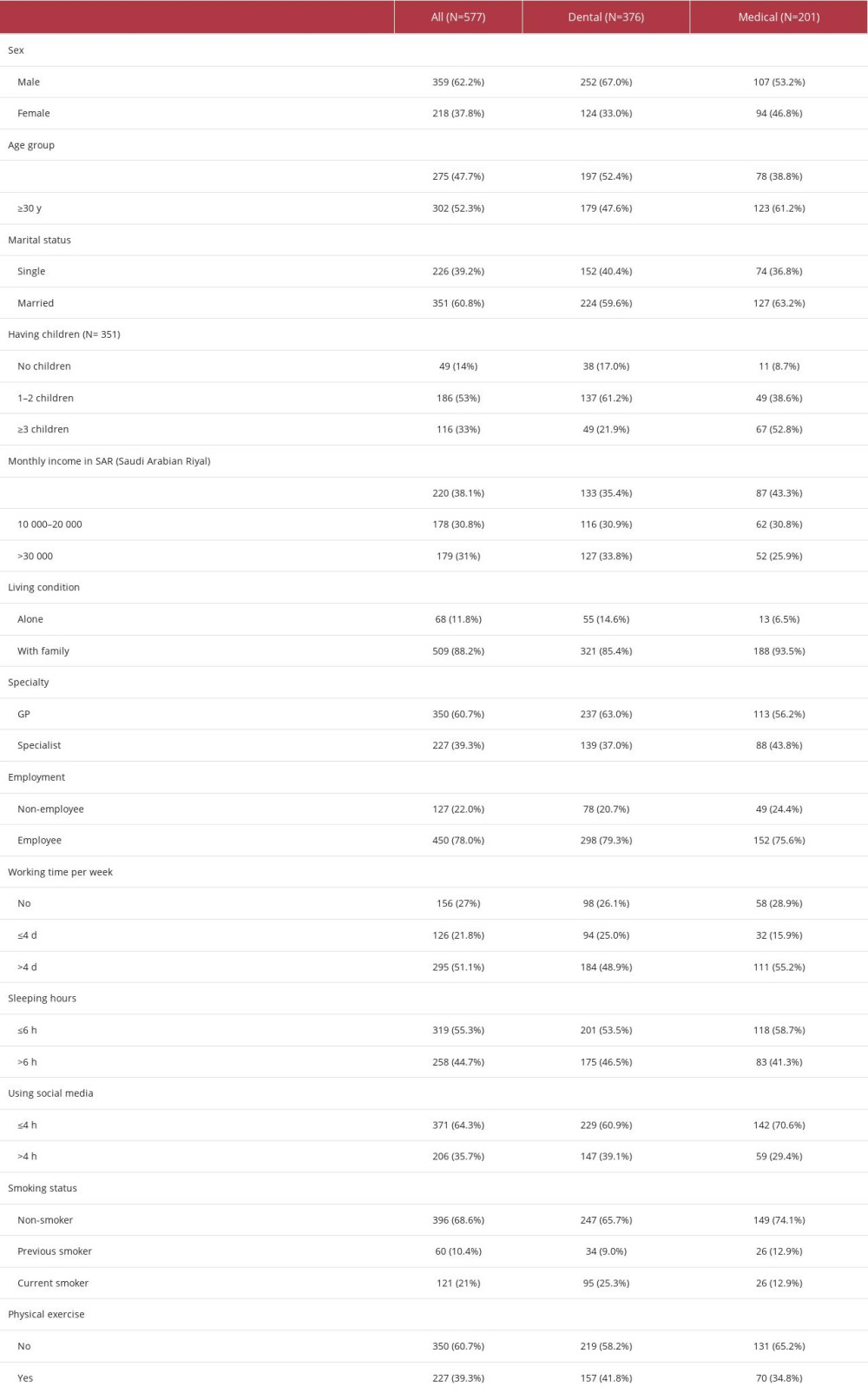 Table 2. Frequency and percentage of the DAS domains scores for all participants and by field of practice.
Table 2. Frequency and percentage of the DAS domains scores for all participants and by field of practice.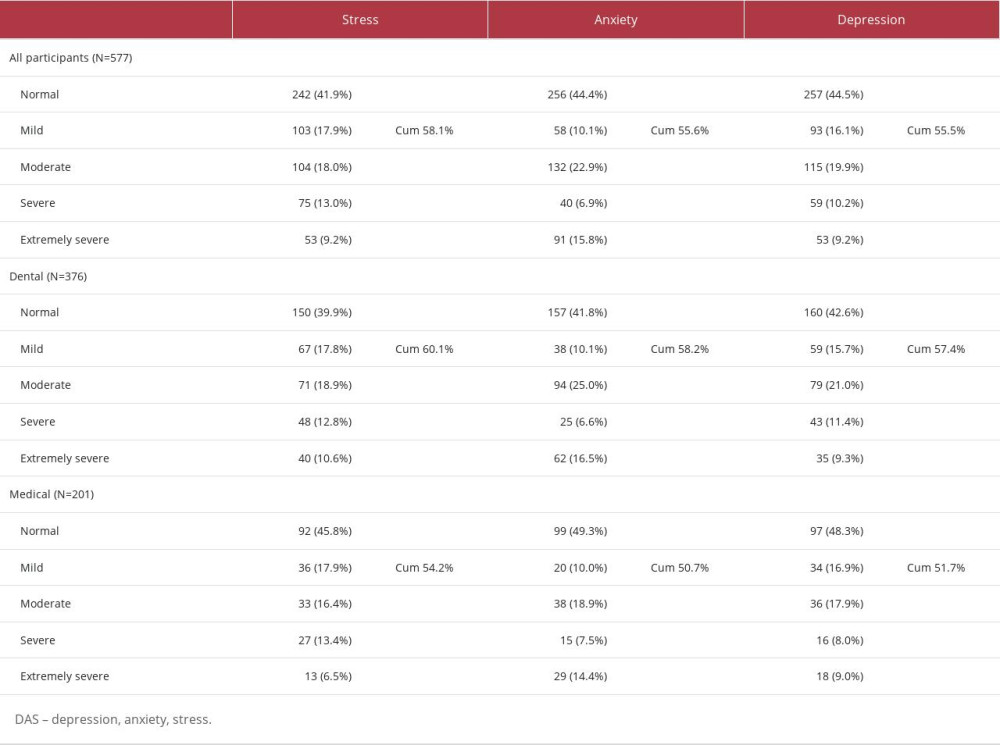 Table 3. Comparison of the DAS domains scores between the different socio-demographic variables for all participants (N=577).
Table 3. Comparison of the DAS domains scores between the different socio-demographic variables for all participants (N=577). Table 4. Comparison of the DAS domains scores between the different socio-demographic variables for dental participants (N=376).
Table 4. Comparison of the DAS domains scores between the different socio-demographic variables for dental participants (N=376).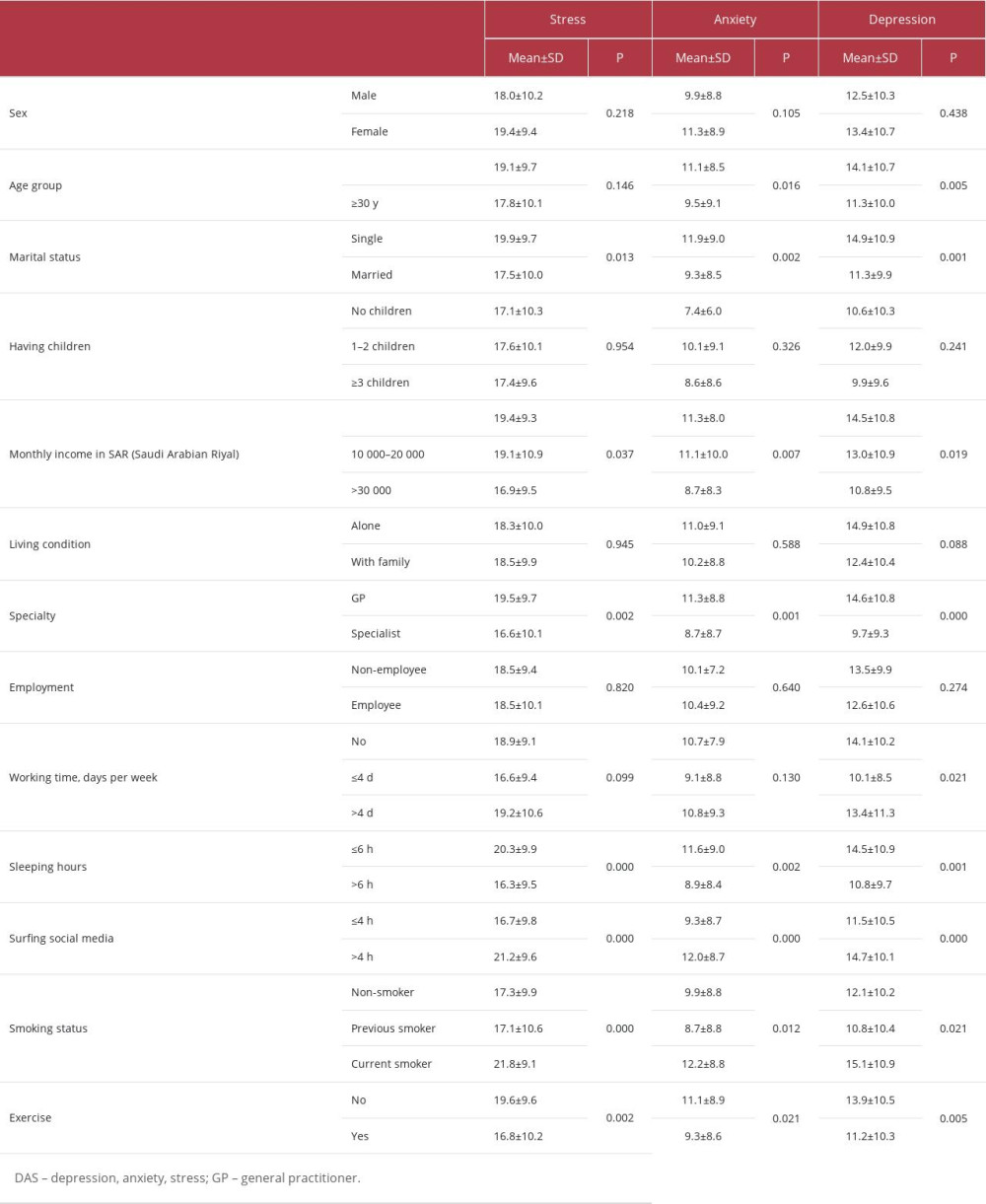 Table 5. Comparison of the DAS domains scores between the different socio-demographic variables for medical participants (N=201).
Table 5. Comparison of the DAS domains scores between the different socio-demographic variables for medical participants (N=201).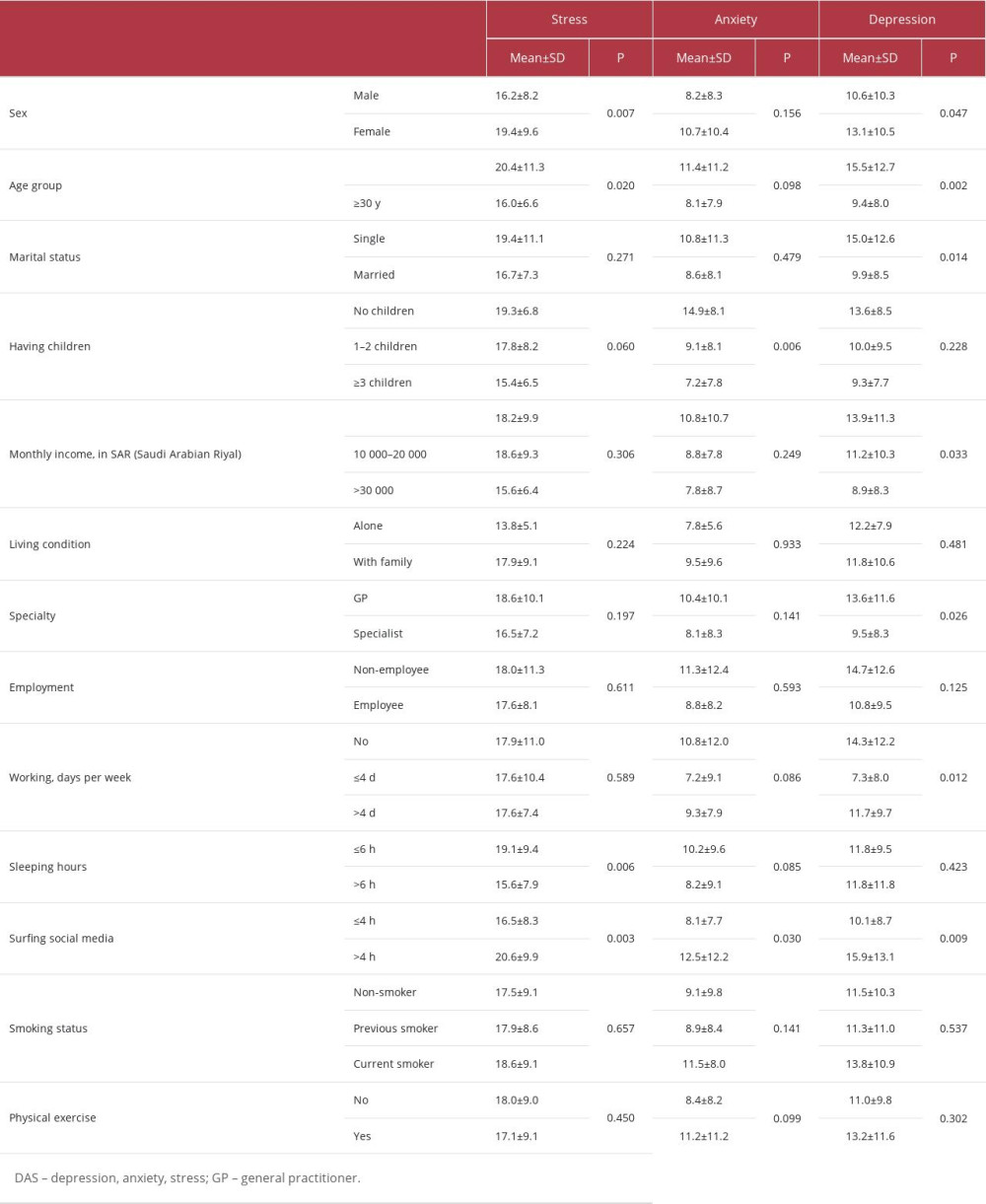 Table 6. Stepwise multiple linear regression of the DAS domains for the significant determinants for all participants and by the field of practice.
Table 6. Stepwise multiple linear regression of the DAS domains for the significant determinants for all participants and by the field of practice.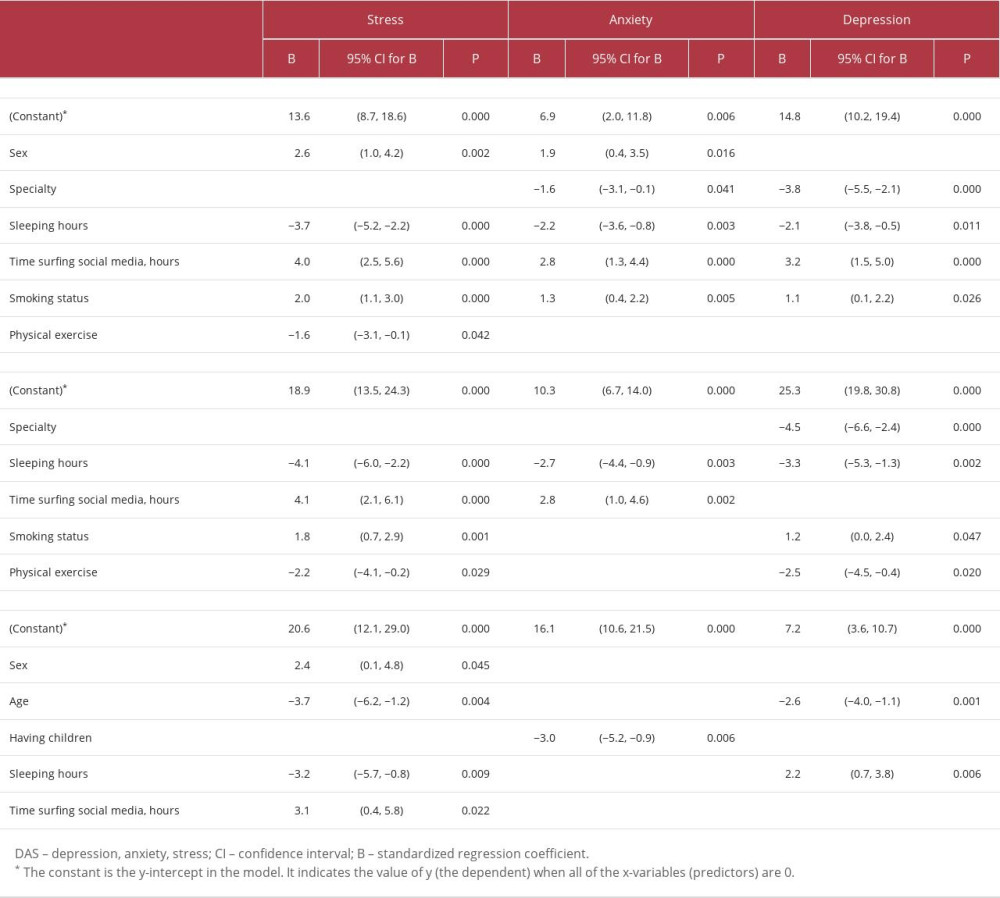
References
1. Riley GJ, Understanding the stresses and strains of being a doctor: Med J Aust, 2004; 181(7); 350-53
2. Song KW, Kim HK, Job stress and its related factors among Korean dentists: An online survey study: Int Dent J, 2019; 69(6); 436-44
3. Knezevic B, Milosevic M, Golubic R, Work-related stress and work ability among Croatian university hospital midwives: Midwifery, 2011; 27(2); 146-53
4. Osborn DPJ, Fletcher AE, Smeeth L, Factors associated with depression in a representative sample of 14 217 people aged 75 and over in the United Kingdom: Results from the MRC trial of assessment and management of older people in the community: Int J Geriatr Psychiatry, 2003; 18(7); 623-30
5. Averina M, Nilssen O, Brenn T, Social and lifestyle determinants of depression, anxiety, sleeping disorders and self-evaluated quality of life in Russia: Soc Psychiatry Psychiatr Epidemiol, 2005; 40(7); 511-18
6. Jahić IM, Bukejlović J, Alić-Drina S, Nakaš E, Assessment of stress among doctors of dental medicine: Acta Stomatol Croat, 2019; 53(4); 354-62
7. Muhić E, Plančak D, Lajnert V, Muhić A, Predictors of job satisfaction in dental professionals of the Bosnia and Herzegovina Federation: Acta Stomatol Croat Int J Oral Sci Dent Med, 2016; 50(3); 222-29
8. Pereira LJ, Pereira CV, Murata RM, Biological and social aspects of Coronavirus Disease 2019 (COVID-19) related to oral health: Braz Oral Res, 2020; 34; e041
9. Deery C, The COVID-19 pandemic: Implications for dental education: Evid Based Dent, 2020; 21(2); 46-47
10. Wrui Zhang, Wang K, Yin L, Mental health and psychosocial problems of medical health workers during the COVID-19 epidemic in China: Psychother Psychosom, 2020; 89(4); 242-50
11. Ali AM, Ahmed A, Sharaf A, The Arabic version of the depression anxiety stress Scale-21: Cumulative scaling and discriminant-validation testing: Asian J Psychiatry, 2017; 30; 56-58
12. Hakami Z, Khanagar SB, Vishwanathaiah S, Psychological impact of the coronavirus disease 2019 (COVID-19) pandemic on dental students: A nationwide study: J Dent Educ, 2021; 85(4); 494-503
13. Lovibond PF, Lovibond SH, The structure of negative emotional states: Comparison of the Depression Anxiety Stress Scales (DASS) with the Beck Depression and Anxiety Inventories: Behav Res Ther, 1995; 33(3); 335-43
14. Bener A, Alsulaiman R, Doodson L, El Ayoubi H, Comparison of reliability and validity of the breast cancer Depression Anxiety Stress Scales (DASS-21) with the Beck Depression Inventory-(BDI-II) and Hospital Anxiety and Depression Scale (HADS): Int J Behav Res Psychol, 2016; 4(4); 197-203
15. Yusoff MSB, Rahim AFA, Baba AA, Prevalence and associated factors of stress, anxiety and depression among prospective medical students: Asian J Psychiatry, 2013; 6(2); 128-33
16. Al-Zubair NM, Sultan Al-ak’hali M, Ghandour IA, Stress among dentists in Yemen: Saudi J Dent Res, 2015; 6(2); 140-45
17. Pouradeli S, Shahravan A, Eskandarizdeh A, Occupational stress and coping behaviours among dentists in Kerman, Iran: Sultan Qaboos Univ Med J, 2016; 16(3); e341
18. Rajab LD, Perceived sources of stress among dental students at the University of Jordan: J Dent Educ, 2001; 65(3); 232-41
19. Acharya S, Factors affecting stress among Indian dental students: J Dent Educ, 2003; 67(10); 1140-48
20. Sugiura G, Shinada K, Kawaguchi Y, Psychological well-being and perceptions of stress amongst Japanese dental students: Eur J Dent Educ, 2005; 9(1); 17-25
21. Ádám S, Work-family conflict among female and male physicians in Hungary: Prevalence, stressor predictors and potential consequences on physicians’ well-being: Masters Thesis, Semmelweis Univ Bp Hung Published online 2008
22. Al Mazrouei AM, Al Faisal W, Hussein HY, Job related stress among physicians at Dubai Health Authority Hospitals-Dubai – UAE: Am J Psychol Cogn Sci, 2015; 1(3); 83-88
23. Töyry S, Kalimo R, Äärimaa M, Children and work-related stress among physicians: Stress Health J Int Soc Investig Stress, 2004; 20(4); 213-21
24. Mathias S, Koerber A, Fadavi S, Punwani I, Specialty and sex as predictors of depression in dentists: J Am Dent Assoc, 2005; 136(10); 1388-95
25. Singh P, Aulak DS, Mangat SS, Aulak MS, Systematic review: factors contributing to burnout in dentistry: Occup Med, 2016; 66(1); 27-31
26. Huri M, Bağış N, Eren H, Umaroğlu M, Orhan K, Association between burnout and depressive symptoms among Turkish dentists: J Dent Sci, 2016; 11(4); 353-59
27. Gong Y, Han T, Chen W, Prevalence of anxiety and depressive symptoms and related risk factors among physicians in China: A cross-sectional study: PLoS One, 2014; 9(7); e103242
28. Song KW, Choi WS, Jee HJ, Correlation of occupational stress with depression, anxiety, and sleep in Korean dentists: Cross-sectional study: BMC Psychiatry, 2017; 17(1); 1-11
29. Pomerleau OF, Pomerleau CS, Behavioural studies in humans: Anxiety, stress and smoking, 2007; 225-254, Wiley Online Library
30. Prasad M, Patthi BR, Singla A, Assessment of anxiety and depression among dental practitioners-An exploratory cross-sectional study: Chance, 2017; 142; 58-59
Tables
 Table 1. Characteristics of the study sample for all participants and by study field.
Table 1. Characteristics of the study sample for all participants and by study field. Table 2. Frequency and percentage of the DAS domains scores for all participants and by field of practice.
Table 2. Frequency and percentage of the DAS domains scores for all participants and by field of practice. Table 3. Comparison of the DAS domains scores between the different socio-demographic variables for all participants (N=577).
Table 3. Comparison of the DAS domains scores between the different socio-demographic variables for all participants (N=577). Table 4. Comparison of the DAS domains scores between the different socio-demographic variables for dental participants (N=376).
Table 4. Comparison of the DAS domains scores between the different socio-demographic variables for dental participants (N=376). Table 5. Comparison of the DAS domains scores between the different socio-demographic variables for medical participants (N=201).
Table 5. Comparison of the DAS domains scores between the different socio-demographic variables for medical participants (N=201). Table 6. Stepwise multiple linear regression of the DAS domains for the significant determinants for all participants and by the field of practice.
Table 6. Stepwise multiple linear regression of the DAS domains for the significant determinants for all participants and by the field of practice. Most Viewed Current Articles
15 Jun 2022 : Clinical Research
Evaluation of Apical Leakage After Root Canal Obturation with Glass Ionomer, Resin, and Zinc Oxide Eugenol ...DOI :10.12659/MSMBR.936675
Med Sci Monit Basic Res 2022; 28:e936675
07 Jul 2022 : Laboratory Research
Cytotoxicity, Apoptosis, Migration Inhibition, and Autophagy-Induced by Crude Ricin from Ricinus communis S...DOI :10.12659/MSMBR.936683
Med Sci Monit Basic Res 2022; 28:e936683
01 Jun 2022 : Laboratory Research
Comparison of Sealing Abilities Among Zinc Oxide Eugenol Root-Canal Filling Cement, Antibacterial Biocerami...DOI :10.12659/MSMBR.936319
Med Sci Monit Basic Res 2022; 28:e936319
08 Dec 2022 : Original article
Use of Estimated Glomerular Filtration Rate and Urine Albumin-to-Creatinine Ratio Based on KDIGO 2012 Guide...DOI :10.12659/MSMBR.938176
Med Sci Monit Basic Res 2022; 28:e938176








